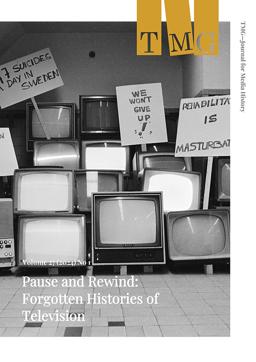2024-06-26
Television, Animals, and History: The Early Years of the BBC
Publication
Publication
TMG Journal for Media History , Volume 27 - Issue 1 p. 1- 22
Animals have been a part of television’s offerings since its inception. Yet animals are largely absent in television’s histories; indeed, animals are largely absent in most histories, with history itself a practice that reproduces anthropocentrism. But animal histories remain methodologically problematic, given the kinds of records usually understood as historical evidence are not those produced by non-humans. And recent attempts to widen television’s histories have adopted methods – such as oral histories – that inadvertently reinforce animal exclusion, given non-humans lack of access to human-centred notions of communication and speech. This paper begins rectifying this omission, through analysis of the BBC’s early output and the purposes to which animals were put during this period. It captures how animals were enmeshed within that early experimental broadcasting, when programme-makers were still conceptualising what television was for and what attractions it could offer its viewers. That animals were drawn on as part of this process indicates how non-humans are enmeshed in anthropocentric representational strategies: and that television histories have usually all but ignored animals indicates how history as a process functions to legitimise anthropocentrism.
| Additional Metadata | |
|---|---|
| , , , , , | |
| Sound & Vision | |
| doi.org/10.18146/tmg.867 | |
| TMG Journal for Media History | |
| creativecommons.org/licenses/by-sa/4.0 | |
|
Mills, Brett. (2024). Television, Animals, and History: The Early Years of the BBC. TMG Journal for Media History, 27(1), 1–22. doi:10.18146/tmg.867 |
|

